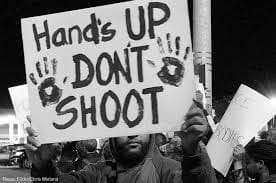by Jason Tarnow | Sep 11, 2020 | Crime, Media, Wheels Of Justice
It has been six years since Matthew de Grood was charged with the murders of five young people at a house party in Calgary, Alberta, and four years since he was found to be Not Criminally Responsible for those offences.
It was concluded that de Grood was suffering from delusions, attributed to undiagnosed schizophrenia, when he caused the deaths of five schoolmates from a local university. He has been in a secure psychiatric facility ever since.
As we have discussed in previous posts, a finding of NCR is neither a determination of guilt, nor an acquittal. It is the beginning of alternative proceedings, which ultimately seek to determine if/when an Accused person can be released back into the community. Like all individuals found NCR, de Grood is required to appear before the Review Board to assess his progress, and to evaluate what freedoms, if any, he may be granted as a result of said progress.

Back in 2016, the Crown suggested it would be making an Application to seek a “High Risk NCR” designation for de Grood. Had this designation been imposed, his appearance before the Review Board would have been extended to take place every three years instead of annually. However – it appears that the Application was never made. This was likely due to the fact that the relevant legislation – the Not Criminally Responsible Reform Act – did not go into force until July 11, 2014, nearly 3 months after the offences took place. As such, the law could not be retroactively applied to de Grood’s case.
At his recent hearing, de Grood’s counsel spoke of the progress he has made during his time at the psychiatric facility. He has been afforded the opportunity to spend the night at his parent’s home on several occasions, taking hospital transportation to and from medical appointments, and volunteering with Meals on Wheels. His counsel submits that de Grood should be granted an absolute discharge due, in part, to the progress he has made with his mental health issues, including being cooperative with taking his medication – and recognizing the devastating consequences that would come as a result of not taking it. He has also demonstrated a high level of remorse for his actions.

Defence counsel further acknowledged that de Grood’s case is extremely high profile. There are concerns regarding the public’s reaction to seeing him on public transit, and how he may face serious adversity in transitioning to a group home.
The Review Board reserved its decision, and accordingly, de Grood remains in a psychiatric facility with heavy restrictions on his freedoms.
by Jason Tarnow | Jun 23, 2020 | Crime, Legal Aid, Legal Rights, Media, Police, Politics, Riots, Social Media, Wheels Of Justice
“Systemic racism is so rampant in the United States, I’m from Canada so I can’t even imagine what that must be like!”
“Police brutality in the US makes me proud to be Canadian”
The two statements above reflect a dangerous and widespread misconception held by many Canadians as they observe growing unrest in the United States:
“Deaths of minorities at the hands of law enforcement just isn’t an issue here”
Of course, nothing could be further from the truth.

Systemic racism exists in institutions across Canada – and an analysis of police brutality against minorities performed by CBC reveals some startling data.
Between 2000 and 2017, CBC was identified 461 fatal encounters between law enforcement and civilians. The RCMP– Canada’s largest and only federal police force – is responsible for the highest number of incidents at 118 casualties, followed by the Toronto Police Service at 52, and the Service de police de la Ville de Montreal at 32. The data demonstrates that these occurrences continue to rise steadily across the country.
When looking at the study, it is obvious that Caucasian individuals represent the largest number of victims per ethnic group, composing roughly 43% of all casualties identified. They also represent nearly 80% of Canada’s total population.
Indigenous victims represent roughly 16% of all casualties identified, but account for less than 5% of Canada’s total population.
Black victims represent roughly 10% of all casualties identified, but account for less than 3% of Canada’s total population.
22% of the victims were unable to be identified by ethnicity.
These facts are alarming and highlight a trend of violence by law enforcement against identifiable minorities. Aggravating circumstances further, it is estimated that mental health and substance abuse issues afflicted approximately 70% of the 461 victims.
The data further reveals that the majority of these occurred in urban areas with diverse cultural communities – not within areas densely populated by minorities. What this means is that of the percentage of the 461 fatalities that involve people of color is grossly disproportionate to the overall population of the areas affected.

Gun related deaths accounted for over 71% of the 461 fatalities, use of restraint at just shy of 16%, physical force at 1.3%, use of an intermediate weapon (a tool not designed to cause death with conventional use, such as a baton) at 1.1%, and “other” accounting for 10.1% of deaths.
Perhaps most shocking of all is that these statistics have not been compiled and presented by the organizations with the most reliable sources of information – the law enforcement agencies themselves.
The analysis conducted by CBC provides a glimpse into the systemic racism that is alive and well within law enforcement agencies across the country, but it hardly tells the entire story.
The data relates only to fatalities – it does not represent the wrongful arrests and prosecutions of minorities in Canada, the disproportionate sentences that are imposed, or the loss of dignity and liberty.
It does not represent the interactions that don’t result in an arrest or charges, nor does it represent the victims of racism and bias who will never have the opportunity to tell their stories.




